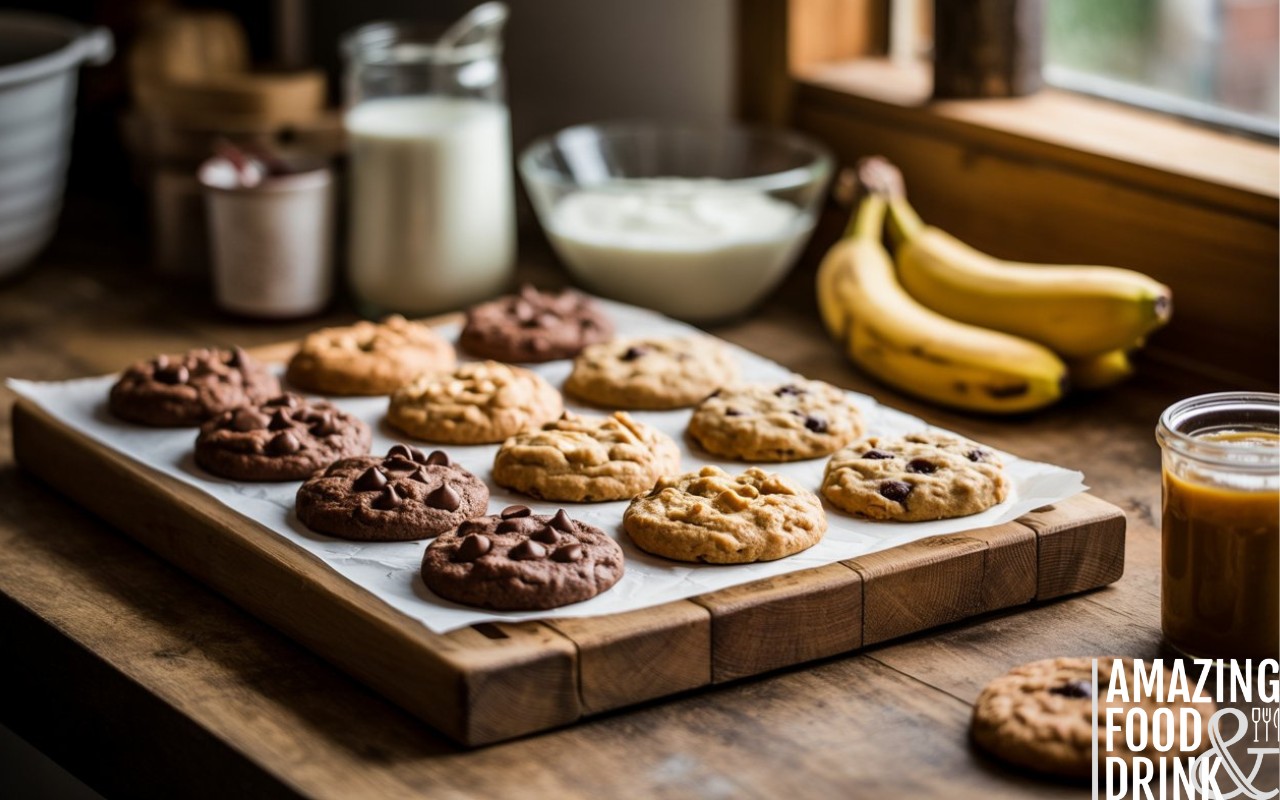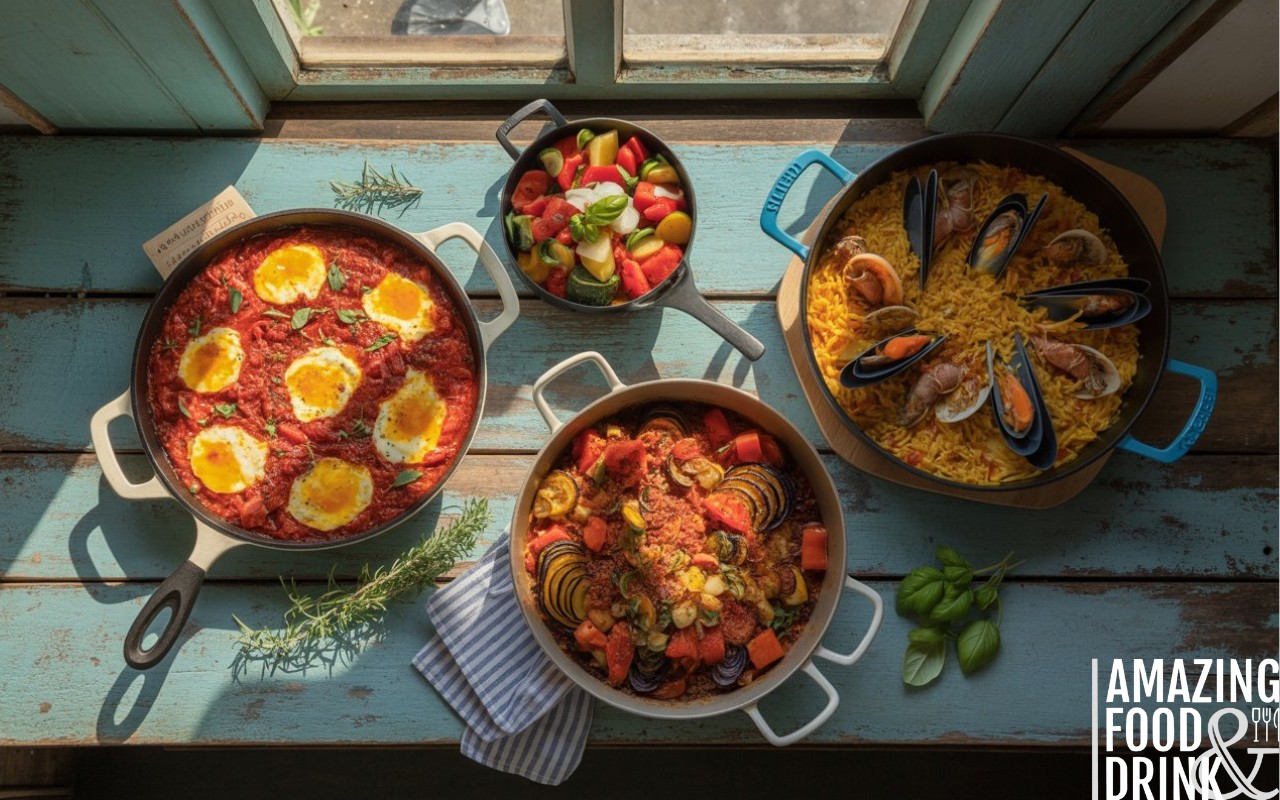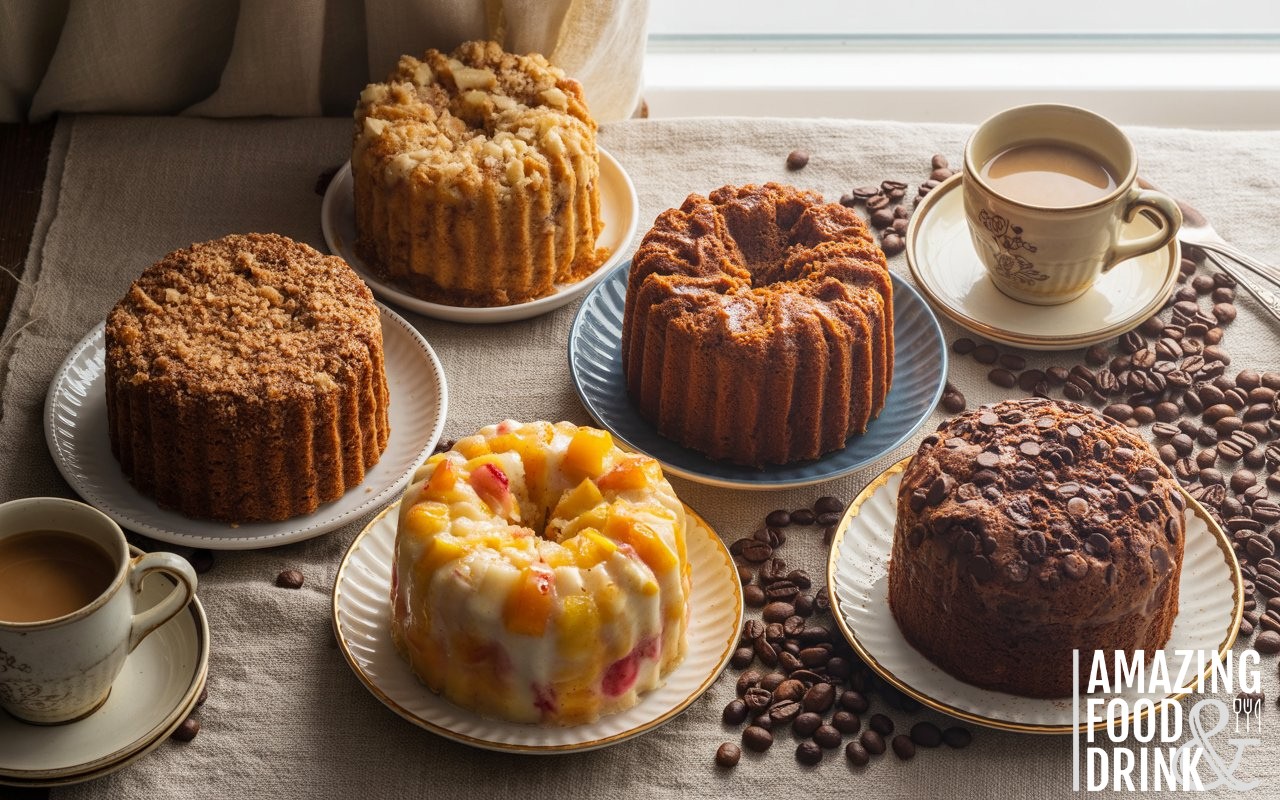Egg-free cookies offer delicious alternatives for anyone avoiding eggs due to allergies, dietary preferences, or simply running out mid-baking session. These three tested recipes prove that removing eggs doesn’t mean sacrificing flavour or texture. After years of perfecting eggless baking techniques, I’ve discovered that cookies without eggs can be just as satisfying as traditional versions.
Many home bakers assume eggs are essential for cookies, but numerous ingredients can provide the binding and moisture that eggs typically contribute. The key lies in understanding which substitute works best for your desired outcome and adjusting techniques accordingly. These eggless cookie recipes deliver consistently excellent results every time.
Table of Contents
- Why Cookies Without Eggs
- Best Egg Substitutes
- Chocolate Chip Cookies
- Peanut Butter Cookies
- Oatmeal Raisin Cookies
- Troubleshooting Problems
- Advanced Tips
- Nutritional Benefits
- Seasonal Variations
Why Make Cookies Without Eggs?

Egg allergies affect approximately 1-2% of children in the UK, making egg-free alternatives essential for many families. Beyond allergies, several reasons drive people toward eggless cookie recipes:
Dietary restrictions often necessitate removing eggs from recipes. Vegans avoid all animal products, while some vegetarians prefer plant-based alternatives. Religious dietary laws may also restrict egg consumption during certain periods.
Availability issues sometimes leave home bakers without eggs when inspiration strikes. Rather than abandoning baking plans, these substitutes keep your kitchen productive.
Texture preferences actually favour some egg-free methods. Cookies made with applesauce tend toward chewier textures, whilst those using yoghurt develop a subtle tanginess that enhances certain flavour profiles.
Health considerations motivate some bakers to reduce cholesterol intake or experiment with lower-calorie alternatives. Many egg substitutes add nutritional benefits whilst reducing overall calorie content.
Research shows that cookies don’t actually require eggs for successful baking. Eggs primarily provide moisture, binding, and slight leavening – functions easily replicated through alternative ingredients with proper technique adjustments.
Best Egg Substitutes for Different Cookie Types

Choosing the right egg substitute significantly impacts your final results. After testing dozens of combinations, I’ve identified which alternatives work best for specific cookie styles:
For Chewy Cookies:
- Applesauce (1/4 cup per egg): Creates moist, tender cookies with subtle sweetness
- Mashed banana (1/4 cup per egg): Adds natural sweetness and produces a soft, cake-like texture
- Greek yoghurt (1/4 cup per egg): Provides tanginess whilst maintaining moisture
For Crispy Cookies:
- Silken tofu (1/4 cup pureed per egg): Creates structure without excess moisture
- Buttermilk (1/4 cup per egg): Adds a slight tang whilst promoting crisp edges
For Binding-Heavy Recipes:
- Ground flaxseed meal (1 tablespoon mixed with 3 tablespoons water per egg): Excellent binding properties
- Chia seeds (1 tablespoon mixed with 3 tablespoons water per egg): Similar binding with added nutrition
Each substitute affects flavour differently. Banana adds noticeable sweetness, making it ideal for chocolate chip cookies or oatmeal varieties. Applesauce provides neutral sweetness perfect for snickerdoodles or sugar cookies. Yoghurt works beautifully in spiced cookies where its tanginess complements warm spices.
Temperature matters when using substitutes. Room-temperature ingredients incorporate more easily, preventing lumpy dough that affects final texture.
Easy Chocolate Chip Cookies Without Eggs (Using Applesauce)

This recipe transforms traditional chocolate chip cookies using applesauce for moisture and binding. The natural sugars in applesauce enhance browning whilst creating enviably chewy centres with slightly crisp edges.
Ingredients
- 1 cup unsweetened applesauce
- 1 cup packed brown sugar
- 1/2 cup caster sugar
- 1 cup softened butter
- 1 teaspoon vanilla extract
- 3 cups plain flour
- 1 teaspoon baking powder
- 1 teaspoon bicarbonate of soda
- 1/2 teaspoon salt
- 2 cups chocolate chips
Instructions
- Cream wet ingredients: Combine applesauce, brown sugar, caster sugar, and softened butter in a large mixing bowl. Beat until light and fluffy, approximately 3-4 minutes with an electric mixer.
- Add vanilla: Mix in vanilla extract until evenly distributed.
- Prepare dry ingredients: Whisk flour, baking powder, bicarbonate of soda, and salt in a separate bowl.
- Combine mixtures: Gradually add dry ingredients to wet mixture, mixing until just combined. Overmixing develops gluten, creating tough cookies.
- Fold in chocolate: Gently incorporate chocolate chips using a wooden spoon or spatula.
- Shape cookies: Drop rounded tablespoons of dough onto ungreased baking sheets, spacing 5cm apart.
- Bake: Preheat oven to 175°C (155°C fan). Bake 12-15 minutes until edges turn golden brown but centres remain soft.
- Cool properly: Allow cookies to rest on baking sheets for 5 minutes before transferring to wire cooling racks.
Pro tip: Slightly underbake these cookies as they continue cooking on hot baking sheets. This prevents over-browning whilst maintaining perfect texture.
No-Egg Peanut Butter Cookies Recipe

Mashed banana replaces eggs brilliantly in peanut butter cookies, adding natural sweetness that complements nutty flavours whilst providing necessary moisture for soft, chewy textures.
Ingredients
- 1 cup smooth peanut butter
- 2 ripe bananas, mashed
- 1/2 cup caster sugar
- 1/2 cup brown sugar
- 1 teaspoon vanilla extract
- 2 cups plain flour
- 1 teaspoon baking powder
- 1/2 teaspoon bicarbonate of soda
- 1/2 teaspoon salt
Instructions
- Mix base ingredients: Combine peanut butter, mashed bananas, both sugars, and vanilla in a large bowl. Mix thoroughly until smooth.
- Prepare flour mixture: Whisk together flour, baking powder, bicarbonate of soda, and salt.
- Form dough: Gradually add dry ingredients to the peanut butter mixture until a cohesive dough forms.
- Chill if needed: If the dough feels too sticky, refrigerate for 15-20 minutes.
- Shape cookies: Roll dough into walnut-sized balls and place on ungreased baking sheets.
- Create pattern: Press each cookie with fork tines in a classic crosshatch pattern, flattening to approximately 1cm thickness.
- Bake: Cook at 175°C (155°C fan) for 12-15 minutes until edges set but centres remain soft.
- Cool: Allow cookies to firm up on baking sheets before transferring.
These peanut butter cookies pair wonderfully with cold milk or work perfectly in lunchbox treats. The banana adds subtle fruity notes that enhance rather than overpower the peanut butter.
Eggless Oatmeal Raisin Cookies

Greek yoghurt transforms these oatmeal raisin cookies, contributing tanginess that balances sweetness whilst creating tender, moist textures. The protein in yoghurt helps structure whilst adding subtle richness.
Ingredients
- 1/2 cup plain Greek yoghurt
- 1/2 cup packed brown sugar
- 1/4 cup caster sugar
- 1/2 cup softened butter
- 1 teaspoon vanilla extract
- 1 1/2 cups plain flour
- 1 teaspoon bicarbonate of soda
- 1 teaspoon ground cinnamon
- 1/2 teaspoon salt
- 1 1/2 cups rolled oats
- 1 cup raisins
Instructions
- Create base mixture: Beat yoghurt, both sugars, butter, and vanilla until well combined.
- Combine dry ingredients: Whisk flour, bicarbonate of soda, cinnamon, and salt in a separate bowl.
- Form cookie dough: Add dry ingredients to wet mixture, stirring until just combined.
- Add texture ingredients: Fold in oats and raisins evenly throughout the dough.
- Portion cookies: Drop rounded tablespoons onto ungreased baking sheets.
- Bake: Cook at 175°C (155°C fan) for 12-15 minutes until golden brown around edges.
- Cool properly: Rest on baking sheets briefly before transferring to cooling racks.
The cinnamon in these cookies pairs beautifully with autumn spice recipes or warming winter treats. Consider adding chopped walnuts or dried cranberries for variation.
Troubleshooting Egg-Free Cookie Problems

Even experienced bakers encounter challenges when adapting traditional recipes. Understanding common issues helps achieve consistent results:
- Problem: Cookies spread too much
- Solution: Chill dough for 30 minutes before baking. Egg substitutes often contain more moisture than eggs, causing excessive spreading. Additionally, ensure butter isn’t too warm when mixing.
- Problem: Cookies too crumbly
- Solution: Increase binding agent slightly. Add an extra tablespoon of your chosen substitute, or incorporate a small amount of milk or cream to improve cohesion.
- Problem: Dense, heavy texture
- Solution: Avoid overmixing once flour is added. Excessive mixing develops gluten, creating tough cookies. Mix until ingredients just combine.
- Problem: Cookies too sweet
- Solution: Remember that fruit-based substitutes like banana and applesauce add natural sweetness. Reduce added sugar by 25-50g when using these alternatives.
- Problem: Cookies don’t brown properly
- Solution: Some substitutes affect browning. Increase oven temperature by 10°C or extend baking time by 2-3 minutes, watching carefully to prevent burning.
- Problem: Cookies taste bland
- Solution: Enhance flavours with vanilla extract, spices, or salt. Egg-free cookies sometimes need flavour boosting to compensate for eggs’ subtle richness.
Advanced Tips for Perfect Egg-Free Cookies

After years of eggless baking, I’ve refined techniques that consistently produce excellent results:
Temperature control proves crucial. Room temperature ingredients blend more easily, preventing lumps that create uneven textures. Remove butter and dairy substitutes from refrigeration 30-60 minutes before baking.
Measuring accuracy matters more without eggs. Eggs provide consistent moisture and binding, so precise measurements of substitutes ensure reproducible results. Use kitchen scales for accuracy rather than cup measurements.
Baking sheet preparation affects outcomes. Line sheets with parchment paper rather than greasing. This prevents sticking whilst allowing even heat distribution that promotes uniform browning.
Timing adjustments often prove necessary. Egg-free cookies may bake faster or slower than traditional versions. Start checking 2 minutes before the recommended time, then adjust based on visual cues.
Storage methods influence longevity. Store these cookies in airtight containers at room temperature. Many egg-free varieties stay fresh longer than traditional cookies due to higher moisture content from substitutes.
Freezing dough saves time. Portion cookie dough and freeze on baking sheets before transferring to freezer bags. Bake directly from frozen, adding 1-2 minutes to baking time. This technique works particularly well with holiday cookie preparations.
Nutritional Benefits of Egg-Free Alternatives

Removing eggs often improves nutritional profiles whilst maintaining delicious results:
- Applesauce reduces calories whilst adding fibre, vitamin C, and antioxidants. One-quarter cup contains approximately 25 calories compared to 70 calories in one egg.
- Mashed banana contributes potassium, vitamin B6, and natural sweetness that allows sugar reduction. The fibre content aids digestion and provides sustained energy.
- Greek yoghurt adds protein, calcium, and probiotics that support digestive health. Choose full-fat versions for best baking results, though lower-fat options work adequately.
- Silken tofu provides complete proteins whilst remaining cholesterol-free. It contains isoflavones that may offer health benefits, particularly for women.
These substitutions make cookies more inclusive for various dietary needs whilst often improving nutritional density. Many people find egg-free cookies easier to digest, particularly those with sensitive stomachs.
Seasonal Variations and Flavour Combinations

Egg-free cookies adapt beautifully to seasonal ingredients and celebrations. Spring variations incorporate lemon zest, fresh herbs like lavender, or early berries. The lightness of egg-free textures complements delicate spring flavours.
Summer adaptations feature fresh fruit like strawberries or peaches mixed into basic dough. Coconut and tropical flavours work particularly well with banana-based recipes.
Autumn enhancements include warming spices like nutmeg, cardamom, or allspice. Pumpkin puree can replace other fruit-based substitutes for seasonal appeal. These pair wonderfully with pumpkin bread recipes or autumn dessert collections.
Winter celebrations benefit from festive additions like cranberries, chopped chocolate, or holiday spices. These cookies work beautifully for Christmas baking or New Year’s celebrations.
Consider texture combinations, too. Add chopped nuts, seeds, or dried fruits to create interesting contrasts. Coconut flakes, mini marshmallows, or white chocolate chips provide visual appeal and flavour complexity.
Frequently Asked Questions
Can cookies be made without eggs?
Absolutely. Eggs primarily provide moisture, binding, and slight leavening in cookies – functions easily replicated using fruit purees, dairy products, or commercial egg replacers.
What happens if you don’t put eggs in cookies?
Without eggs, cookies may spread differently, have altered textures, or require adjusted baking times. However, proper substitutes prevent these issues whilst often improving flavour and nutrition.
Do all cookies contain eggs?
No. Many traditional cookie recipes naturally omit eggs, including some shortbread varieties, certain biscuits, and many international cookie traditions.
What’s the best egg substitute for cookies?
This depends on desired outcomes. Applesauce creates chewy textures, bananas add sweetness, and yoghurt provides tanginess. Experimentation helps determine personal preferences.
Are egg-free cookies suitable for vegans?
Egg-free cookies can be vegan if you also substitute butter with plant-based alternatives and ensure all other ingredients meet vegan requirements.
Storage and Serving Suggestions

Proper storage maintains quality whilst serving suggestions enhance enjoyment:
Room-temperature storage works best for most egg-free cookies. Use airtight containers to prevent staleness, and separate different varieties to prevent flavour transfer.
Freezing options extend shelf life significantly. Wrap individual cookies in plastic film before placing them in freezer bags. Most varieties freeze successfully for up to three months.
Serving suggestions enhance the cookie experience. Warm cookies slightly before serving to revive soft textures. Pair chocolate chip varieties with cold milk, serve spiced cookies alongside hot tea, or include them in dessert platters for entertaining.
Gift packaging makes these cookies perfect for sharing. Layer between parchment paper in decorative tins, or wrap individual cookies for bake sale contributions or teacher appreciation gifts.
These egg-free cookie recipes prove that dietary restrictions needn’t limit baking creativity or enjoyment. Whether accommodating allergies, following specific eating plans, or simply exploring new techniques, these tested recipes deliver consistently satisfying results that everyone can appreciate.



